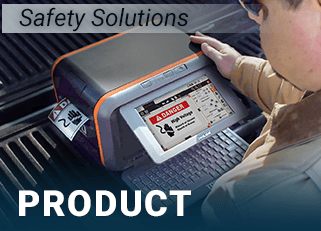Conveyor Mangles Worker - 5 Safety Tips
03
February,
2023
3 MINUTE READ

Preparing for shipment, an endless line of shrink wrapped boxes exited the machine and came trailing down a belt conveyor at a wine production facility in San Joaquin Valley, California. A palletizing machine in need of maintenance was out of order. Where the positive belt turned in to free rollers between belts, an employee began pulling cases off the line and stacking them onto a pallet. In seconds, the stacker's rubber grip glove became caught in the positive belt, pulling him in up to his forearm. In an ill-fated attempt to rescue his arm, his other arm was pulled in as well.
"We hit the e-stop and stayed there until maintenance got him out," recalled Richard Livasy, a former worker at the facility. Thankfully, the coworker did not suffer an amputation, but he could no longer work because of the injuries, Livasy said.
Conveyor Injuries
While conveyor operation answers the need for rapid productivity, safety should always be a top concern. Overall employment of material moving machine operators is to grow 6 percent from 2016 to 2026, about as fast as the average for all occupations, according to the Bureau of Labor and Statistics. There are more than 50 workplace fatalities a year where conveyors are the primary source of injury and workplace accidents. In 2018, there were 85 caught machine accidents investigated by OSHA, which included conveyor safety standard violations.
Some of the causes for machine caught in or caught by injuries are from manual handling, speed to volume automation, inadequate or lack of machine guarding, and failure to employ lockout/tagout properly during machine maintenance to control hazardous energy, according to OSHA.
According to distribution and manufacturing professionals at Cisco Eagle, there are simple design methods to improve conveyor workstations while also helping to prevent ergonomic injuries. "Many order pickers are in contact with conveying equipment on a frequent basis," Cisco Eagle said. "Instructing them how to safely utilize the conveyors and how to avoid contact with them is an investment that will pay off."
Keep Safety Flowing
Employers can take proactive steps to develop and implement conveyor safety along with energy control procedures and hazard mitigation plans. A few tips to improve conveyor safety include:
- Conveyor arrangement: Is there a better way to improve workflow and safety? Analyze the layout of the conveyor system from top to bottom. Ensure railings, safety netting and other protection products are in place to prevent dropped objects injuries. Separate workers from unsafe machine areas using enclosures or other machine guarding, floor signs, and/or floor marking.
- Machine guarding: Look for pinch points and areas where conveyors and workers could come into contact. Use conveyor guarding where conveyor lines meet roller sections. Make sure to communicate caution to workers by posting a pinch point or other machine safety warning sign.
- Maintenance: Make sure workers follow a maintenance plan that includes safety. Implement a strict lockout/tagout policy. A warning signal should detonate for a time prior to startup. All workers should know the location of emergency stops and start controls.
- Training: Train workers to help them avoid injuries by conveyor systems. Instruct them on how to avoid contact with conveyors and their pinch points. Remind workers to keep their hands, clothing, and hair away from the conveyor line. Workers should never sit, stand, or climb onto conveyors at any time. Teach workers about conveyor alarms and other noises to understand what they mean for effective belt, gravity, power roller, and other types of conveyor safety.
- Personal Protective Equipment: PPE is the last line of defense, but it can make all the difference. Make sure workers wear the correct hard hat, gloves, safety shoes, hearing and eye protection. Keep PPE neat and in working order. Avoid wearing jewelry such as watches, rings, and bracelets that can snag.
Building an Effective Program
Certain industries have a higher inherent risk of workers facing amputations. These include meat and poultry processing, recycling and scrap metal operations, and supermarket delis. No matter what industry, if there's dangerous machinery, OSHA requires employers to implement a LO/TO program to prevent injury from the release of stored energy. OSHA requires:
- Tools and training so that all energy sources are shut off, disconnected from the machine, and locked out before work begins to prevent inadvertent machine energization
- Training for workers to verify that the energy source has been isolated
- A means for the machine's stored energy to be dissipated, whenever possible
- Readily-verifiable means for employees to know that hazardous energy cannot re-accumulate
Conveyor systems have many moving parts that include the potential to injure a worker. Facility managers can easily focus on thorough facility safety plans using a visual communication checklist. Using workplace best practices consistently helps ensure that workers understand safety rules. This in turn reaffirms workplace culture for safety and efficiency. Download our free guide to get started.
RELATED RESOURCES

Crucial Steps to Reduce Lockout Tagout Violations
Though simple and effective, lockout/tagout is a frequently violated workplace safety standard. Safety ...
Read
Machine Crushing Victim Shares LO/TO Importance
A construction maintenance worker was inside a machine when it was powered on, which caused him to nearly be ...
Read
Minor Machine Injuries Are Indicative of Larger Safety Issues
Furniture giants Ashley Furniture Industries has been at the helm of machine safety conversations since OSHA ...
Read.png)


